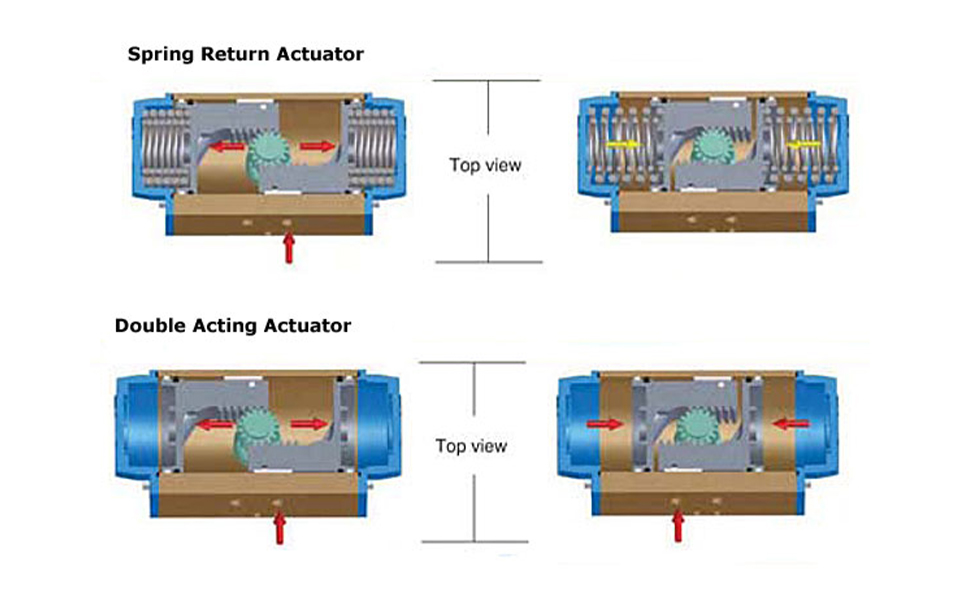INDUSTRY NEWS
Pneumatic single acting valve and double acting valve difference
In industrial automation and control systems, valves are a vital component. According to the different driving mode, the valve can be divided into single-acting valves and double-acting valves. There are significant differences in the working principle, application and performance characteristics of these two valves.
First of all, the driving method is the most obvious difference between single-acting valves and double-acting valves. Single-acting valves usually rely on a power source to open, and their closure depends on an external force or the action of a spring. For example, when pressure is applied to the piston of a single-acting valve, the valve will open; Once the pressure is removed, the spring closes the valve. Therefore, the operation of single-acting valves is relatively simple, but depends on external gravity or springs.
In contrast, double-acting valves require the support of a power source during opening and closing. Its action is completed by the input air pressure, whether it is opened or closed, every action of the double-acting valve is controlled by an external driving force. This design allows the double-acting valve to respond quickly during operation and to handle higher loads and pressures.
Secondly, response speed and control accuracy are important differences between the two. Because the double-acting valve requires power support during each moving cycle, it usually provides faster response and higher control accuracy. This makes double-acting valves more suitable for applications that require high flow control, such as chemical, pharmaceutical and food processing industries. The single-acting valve is relatively slow because the closing process depends on the reaction speed of the spring, and is suitable for occasions where the control accuracy is not high.
Third, from the point of view of installation and maintenance, the single-acting valve structure is relatively simple, installation and maintenance is relatively convenient, suitable for small systems and applications with low requirements for the operating environment. Because of its complex structure, double-acting valves may require more control systems and power equipment, installation and maintenance is relatively complex, but because of its high reliability and adaptability, its use is more extensive.
Finally, there are differences in the applicable environment. Single-acting valves are suitable for systems where fluid opening and closing are less frequent, while double-acting valves are suitable for situations where flow and pressure need to be regulated frequently. In some applications where safety is required, double-acting valves are used more widely because of their better control capabilities.

